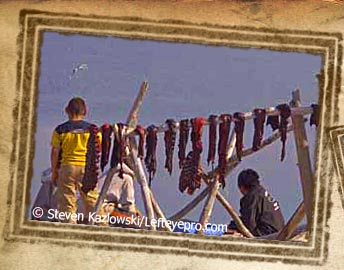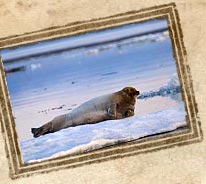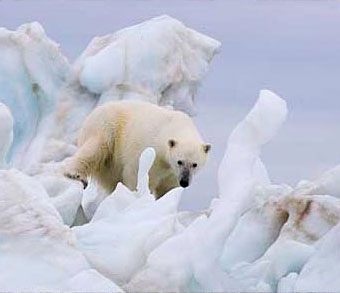Culture
Language
The Inupiat language is taught in Kaktovik school in order to maintain its use in the local community. Bruce Inglangasuk is a native speaker and would be happy to impart his knowledge of the language to visitors, from explaining place names to teaching greetings.
Only about 10,000 people speak various dialects of the Inupiat language across North America, so Kaktovik is an important centre for its preservation. The language is principally oral, and has only been written down within recent centuries. For this reason, it is much easier to learn it from a native speaker like Bruce.
The Inupiat alphabet:
a, aa, ch, g, g, h, i, ii, k, l , ḷ, ł, ł ,m, n, ŋ, ñ, p, q, r, s, sr, t, u, uu, v, (y), (yy)
Subsistence Life Style
"Inupiat people continue to rely heavily on subsistence hunting and fishing, including whaling. The capture of a whale benefits each member of a community, as the animal is butchered and its meat and blubber allocated according to a traditional formula.
Even city-dwelling relatives thousands of miles away are entitled to a share of each whale killed by the hunters of their ancestral village. Muktuk, the skin of bowhead and other whales, is rich in vitamins A and C and contributes to good health in a population with limited access to fruits and vegetables."
Bruce believes strongly in the intrinsic relationship between the Inupiat people and their lands - he says; "we are keepers of the lands and the animals; we respect our animals and try not to overkill them ".
Bruce is a subsistence hunter, who relies on eating the animals in his homelands for his own survival. He combines the use of a gun and traditional hunting and butchery techniques in order to humanely and safely kill a caribou.
Bruce is willing to teach you the skills he uses in order to hunt caribou, including the skills of butchery, whereby an animal is skinned and parts eaten at the kill. He ensures that his hunting is sustainable by only killing what he will eat and watching the caribou before the skill to ensure that he does not shoot a pregnant or suckling female caribou (cow).
Bruce butchers the meat using a traditional Inupiat hunting knife - the 'ulu' and his hands. If the animal is healthy, he will eat its bone marrow and antler tips (in June or July). He will then cut out the liver and marinate it in strips within the stomach before eating it raw. You will be invited to taste these parts of the animal!
Once the caribou is killed, it is taken back to the village, where it is hung up and smoked in order to store it for the hard winter ahead.


